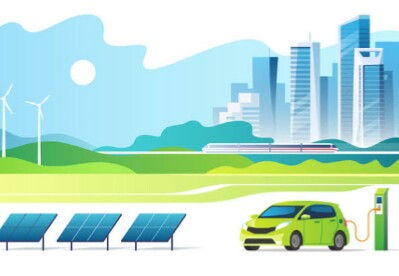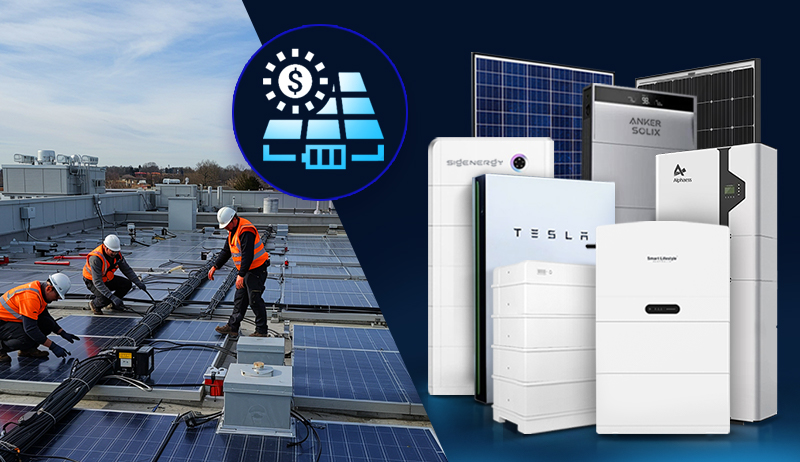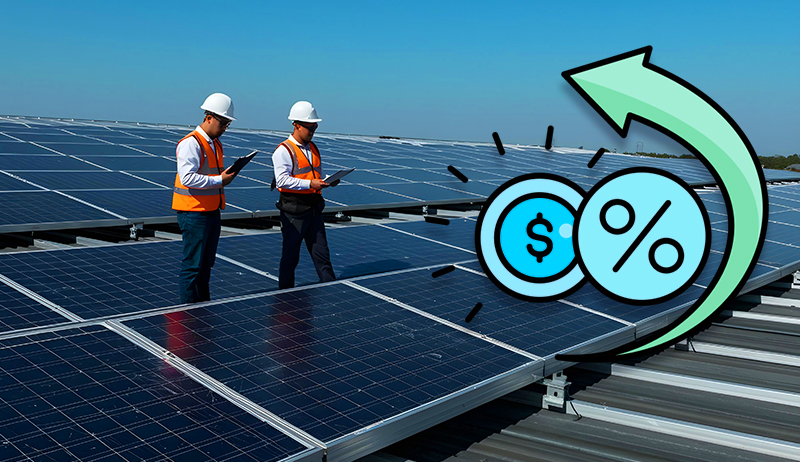Sustainable Transportation
Introduction San Francisco: Sustainable Transportation
San Francisco, the vibrant and forward-thinking city on the West Coast of the United States, has long been a pioneer in embracing sustainability and green initiatives.
As the world faces increasing environmental challenges, San Francisco has stepped up to the plate by implementing innovative solutions for sustainable transportation. From electric vehicles to extensive public transportation networks, the city has made significant progress towards reducing carbon emissions and promoting a cleaner, greener future. In this article, we will explore the various sustainable transportation options in San Francisco and highlight the city’s commitment to creating a more eco-friendly and efficient transportation system.
San Francisco: Sustainable Transportation
1. Electric Vehicles (EVs):
San Francisco has been at the forefront of the electric vehicle revolution. The city boasts a robust network of electric vehicle charging stations, making it convenient for residents and visitors to charge their EVs. Furthermore, the local government offers incentives and rebates to encourage the adoption of electric vehicles. This commitment to sustainable transportation has resulted in a significant reduction in greenhouse gas emissions and air pollution within the city.
2. Public Transportation:
San Francisco’s public transportation system is renowned for its efficiency and accessibility. The San Francisco Municipal Transportation Agency (SFMTA) operates a comprehensive network of buses, light rail, and historic cable cars that serve both residents and tourists. The city has also invested in modernizing its fleet by introducing electric buses, reducing noise and emissions. Additionally, initiatives like the bike-sharing program and pedestrian-friendly infrastructure encourage active transportation and reduce reliance on private vehicles.
3. Bike Infrastructure:
San Francisco’s commitment to sustainable transportation extends to its bike infrastructure. The city has implemented an extensive network of bike lanes, protected bike paths, and bike-sharing programs, making cycling a safe and convenient option for commuting and leisure. Initiatives like the “Vision Zero” program aim to eliminate traffic fatalities and make the streets safer for cyclists, pedestrians, and motorists alike.
4. Carpooling and Ride-Sharing:
To further reduce the number of cars on the road, San Francisco encourages carpooling and ride-sharing. Several platforms and services provide convenient options for sharing rides, reducing traffic congestion and carbon emissions. These initiatives not only promote sustainability but also contribute to building a stronger sense of community by fostering connections between residents who share similar commutes.
5. Sustainable Infrastructure:
San Francisco’s commitment to sustainable transportation goes beyond vehicles and extends to infrastructure. The city has implemented smart traffic management systems that optimize traffic flow, reduce congestion, and minimize fuel consumption. Additionally, the use of environmentally friendly construction materials and sustainable design practices in infrastructure projects helps minimize the carbon footprint associated with transportation development.
Public Transportation in San Fransisco
San Francisco has a well-developed public transportation system that serves residents, commuters, and visitors throughout the city and the surrounding region.
The main components of public transportation in San Francisco include:
1. San Francisco Municipal Railway (Muni): Muni is the primary public transit operator in the city, providing bus, trolleybus, and light rail services. Muni buses and trolleybuses serve various neighborhoods, while the iconic historic cable cars operate in certain parts of the city.
2. Bay Area Rapid Transit (BART): BART is a regional rapid transit system that connects San Francisco with neighboring cities in the Bay Area, including Oakland, Berkeley, and San Jose. BART provides a quick and efficient way to travel between cities and within San Francisco.
3. Caltrain: Caltrain is a commuter rail service that links San Francisco with cities on the Peninsula, such as San Jose and Gilroy. It provides a vital connection for those commuting to and from the Silicon Valley area.
4. Golden Gate Transit: Golden Gate Transit operates buses that connect San Francisco with Marin County, Sonoma County, and parts of Contra Costa County, providing regional transportation options.
5. Ferries: San Francisco’s ferry services connect the city with several destinations across the Bay, including Sausalito, Tiburon, Alameda, and Oakland. These ferries offer scenic and convenient travel options for commuters and tourists.
6. Cable Cars: San Francisco’s iconic cable cars are not just a mode of transportation but also a popular tourist attraction. They operate on three routes: Powell-Mason, Powell-Hyde, and California Street.
7. Ride-Sharing and Taxis: Ride-sharing services like Uber and Lyft, as well as traditional taxis, are widely available in San Francisco, providing additional transportation options.
8. Accessibility Services: San Francisco offers accessible public transportation services for individuals with disabilities, including accessible buses, paratransit services, and elevator-equipped train stations.
9. Transit Passes and Integrated Fare Systems: San Francisco has a Clipper Card system that allows users to pay for fares across multiple transit agencies with a single card, promoting seamless transfers between different modes of transit.
10. Bus Rapid Transit: The city continually works on improving and expanding its public transportation system. Planned projects include subway expansions, bus rapid transit lines, and enhancements to existing services.
While public transportation in San Francisco is generally efficient and convenient, the city still faces challenges related to congestion and capacity during peak hours. Efforts are ongoing to improve transit reliability, enhance sustainability, and address the needs of the growing population to ensure that public transportation remains a viable and attractive option for residents and visitors alike.
Sustainable Infrastructure in San Fransisco
Sustainable infrastructure in San Francisco is essential for the city to address environmental challenges, reduce its carbon footprint, and create a more livable and resilient urban environment.
Here are some key areas where sustainable infrastructure can be implemented:
1. Green Building Standards: Promote and enforce green building standards for new constructions and renovations. Encourage the use of sustainable materials, energy-efficient designs, and renewable energy sources like solar panels.
2. Public Transportation: Invest in and expand public transportation options, including buses, light rail, and electric trolley systems. Encourage the use of electric or hybrid buses to reduce emissions.
3. Cycling Infrastructure: Improve and expand the city’s cycling infrastructure, including bike lanes, protected bike paths, and bike-sharing programs. Encouraging cycling as a mode of transport can reduce traffic congestion and emissions.
4. Renewable Energy: Increase the use of renewable energy sources for municipal facilities and encourage private businesses and residents to adopt solar, wind, or other clean energy options.
5. Waste Management: Implement effective waste management strategies, including recycling and composting programs, to reduce landfill waste and promote a circular economy.
6. Stormwater Management: Develop green infrastructure solutions to manage stormwater runoff, such as green roofs, rain gardens, and permeable pavements, to improve water quality and reduce strain on the sewer system.
7. Urban Green Spaces: Create and maintain urban green spaces, parks, and greenways to enhance biodiversity, provide recreational opportunities, and improve air quality.
8. Resilient Water Infrastructure: Invest in water infrastructure that is resilient to the impacts of climate change, including measures to address sea-level rise and improve water conservation.
9. Smart Grid and Energy Efficiency: Implement smart grid technology and energy-efficient measures to optimize energy usage and reduce overall consumption.
10. Green Procurement: Adopt sustainable procurement policies for city projects and services, favoring environmentally friendly products and services.
11. Climate Adaptation Planning: Develop comprehensive climate adaptation plans to address the impacts of climate change, such as extreme weather events and rising sea levels.
12. Community Engagement: Engage with residents, businesses, and community organizations to raise awareness about sustainable infrastructure initiatives and encourage their active participation in sustainability efforts.
By implementing sustainable infrastructure solutions across these areas, San Francisco can become a model for environmentally responsible urban development, ensuring a more sustainable and resilient future for the city and its residents. Additionally, such efforts can inspire other cities to adopt similar measures and contribute to global sustainability goals.
Conclusion San Francisco: Sustainable Transportation
San Francisco serves as an inspiring model for cities worldwide in the pursuit of sustainable transportation.
Through its focus on electric vehicles, public transportation, bike infrastructure, carpooling, and sustainable infrastructure, the city has successfully reduced its carbon footprint and promoted greener commuting options.
The efforts made by San Francisco demonstrate that sustainable transportation is not only essential for combatting climate change but also enhances the livability and quality of life for its residents. As the city continues to evolve and innovate, it is clear that the future of transportation in San Francisco will be rooted in sustainability, providing a shining example for others to follow in creating more eco-friendly and efficient urban transportation systems.
https://www.exaputra.com/2023/07/san-francisco-sustainable-transportation.html
Renewable Energy
ACORE Applauds Maryland Gov. Moore’s New Executive Order on Energy Affordability and Reliability
-
Grid Infrastructure -
Policy -
Siting & Permitting Reform -
Technology -
Press Releases
ACORE Applauds Maryland Gov. Moore’s New Executive Order on Energy Affordability and Reliability
ACORE Applauds Maryland Gov. Moore’s New Executive Order on Energy Affordability and Reliability
FOR IMMEDIATE RELEASE
Dec. 19, 2025
WASHINGTON, D.C. — The American Council on Renewable Energy (ACORE) issued the following statement from ACORE President and CEO Ray Long in response to Governor Wes Moore’s announcement of new initiatives to build an affordable and reliable energy future for Maryland.
“ACORE applauds Gov. Wes Moore for setting forth a new series of energy initiatives that seek to stabilize energy bills while ensuring grid reliability and efficiency for Marylanders. In particular, ACORE commends key provisions in the order to increase the deployment of advanced transmission technologies; streamline the siting and permitting of high-voltage transmission, energy storage, and other infrastructure; advance wholesale market reforms; and more. As the country enters a new era of electricity demand, initiatives like Gov. Moore’s will facilitate significant progress toward building a modern and reliable grid needed to maintain economic competitiveness and keep the lights on,” said ACORE President and CEO Ray Long.
###
ABOUT ACORE
For over 20 years, the American Council on Renewable Energy (ACORE) has been the nation’s leading voice on the issues most essential to clean energy expansion. ACORE unites finance, policy, and technology to accelerate the transition to a clean energy economy.
For more information, please visit http://www.acore.org.
Media Contacts:
Stephanie Genco
Senior Vice President, Communications
American Council on Renewable Energy
communications@acore.org
The post ACORE Applauds Maryland Gov. Moore’s New Executive Order on Energy Affordability and Reliability appeared first on ACORE.
https://acore.org/news/acore-statement-on-gov-wes-moores-new-energy-executive-order/
Renewable Energy
Meat–It’s What’s for Dinner, if You Don’t Care about the Animals or the Planet
 We often hear meat-eaters say things like, “If beef isn’t good, why do the manufacturers of plant-based burgers try so hard to make their burgers taste like real meat?”
We often hear meat-eaters say things like, “If beef isn’t good, why do the manufacturers of plant-based burgers try so hard to make their burgers taste like real meat?”
There is no doubt that cow and pig meat tastes and smells great; every vegan on Earth will tell you that.
The problem lies elsewhere, in a) the environmental impact of clearing the rainforests to make room for more cows, and b) the cruelty inherent in factory farming and the slaughtering of the animals.
Meat–It’s What’s for Dinner, if You Don’t Care about the Animals or the Planet
Renewable Energy
FAQs: Your Most Common Commercial Solar Questions Answered
The post FAQs: Your Most Common Commercial Solar Questions Answered appeared first on Cyanergy.
https://cyanergy.com.au/blog/faqs-your-most-common-commercial-solar-questions-answered/
-
Climate Change4 months ago
Guest post: Why China is still building new coal – and when it might stop
-
Greenhouse Gases4 months ago
Guest post: Why China is still building new coal – and when it might stop
-
Climate Change2 years ago
Spanish-language misinformation on renewable energy spreads online, report shows
-

 Greenhouse Gases2 years ago
Greenhouse Gases2 years ago嘉宾来稿:满足中国增长的用电需求 光伏加储能“比新建煤电更实惠”
-
Climate Change Videos2 years ago
The toxic gas flares fuelling Nigeria’s climate change – BBC News
-

 Climate Change2 years ago
Climate Change2 years ago嘉宾来稿:满足中国增长的用电需求 光伏加储能“比新建煤电更实惠”
-

 Carbon Footprint2 years ago
Carbon Footprint2 years agoUS SEC’s Climate Disclosure Rules Spur Renewed Interest in Carbon Credits
-
Climate Change2 years ago
Why airlines are perfect targets for anti-greenwashing legal action













 Full energy assessment
Full energy assessment



